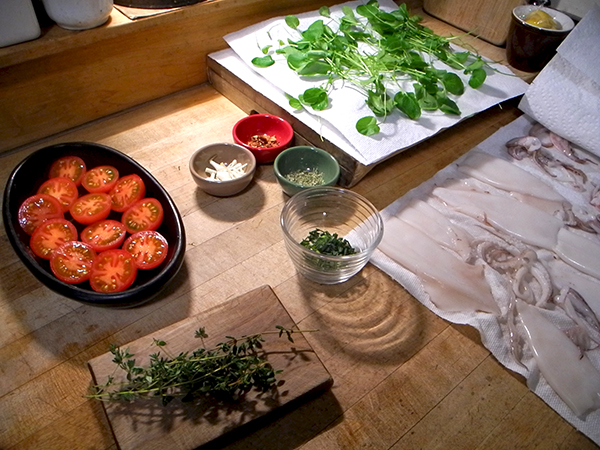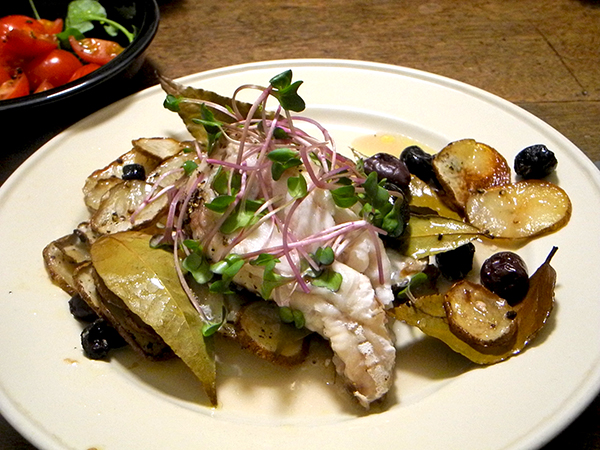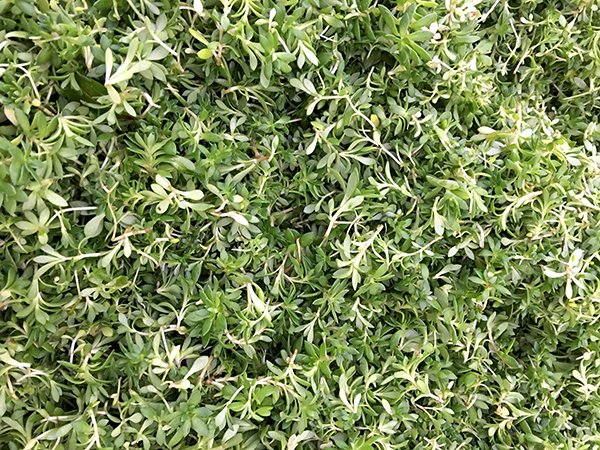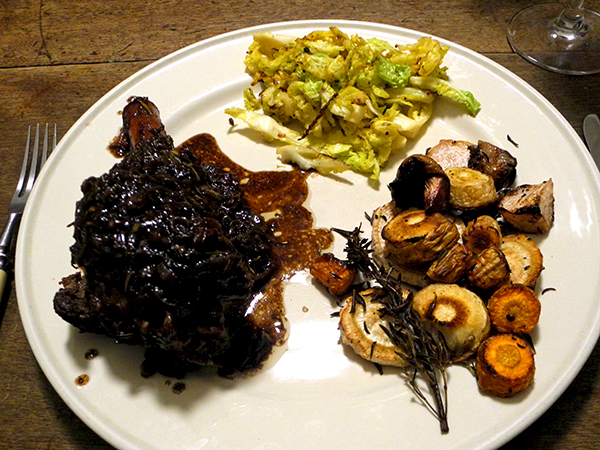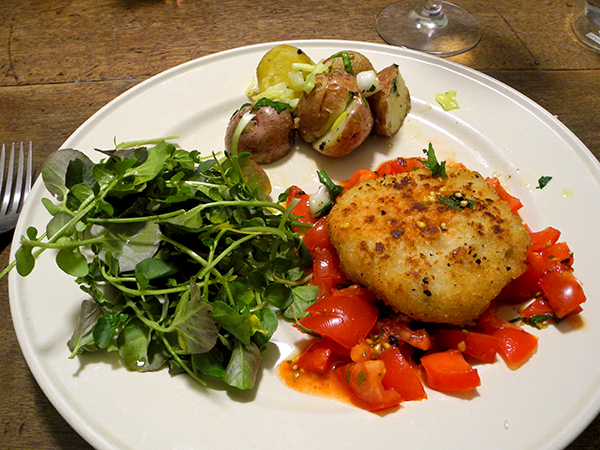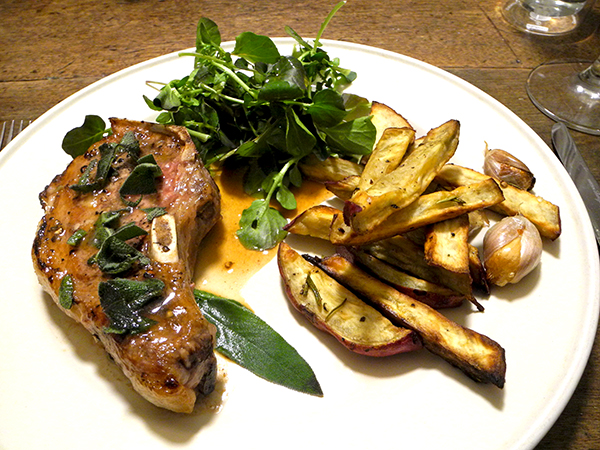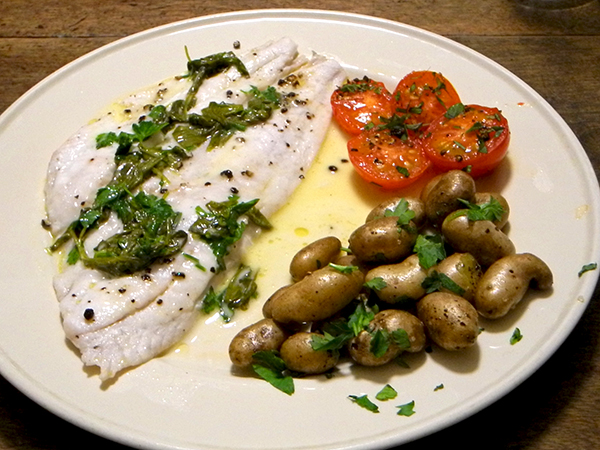
nothing green, and I had some; thought it inauthentic, but probably wrong
The picture pretty much describes the robust taste of this dish. Until I had actually served it, I had no idea it would be so rich. We were lucky that we had leaned toward the sturdier side of the red wine spectrum: The pairing was inspired, even if there was some luck involved.
Until the very last moment, and in fact not until I had almost finished simmering the tongue, I had no idea how I was going to finish it. I had found a simple and attractive formula for a sauce which involved a lot of (green) olives, a recipe characteristic of Venetian cookery, but it was described as a dish that should be served at room temperature, and that wasn’t what I was looking for that night. I liked the idea of the olives however, so I went looking for another approach using olives. While doing so, I accidentally found myself again in the good company of a very familiar (and very much missed) source, Kyle Phillips, with his own recipe, archived here.
I stopped looking further; it’s Kyle’s very simple and absolutely delicious approach which I adopted and describe below, along with the sources of the ingredients I used.
- one 14-ounce veal tongue from Consider Bardwell Farm, scrubbed, simmered for about three hours in fresh water and a mix of aromatic vegetables, herbs, and spices (onion, parsley root, celery root, carrot from John D. Madura Farm, bay leaf, from Westside Market, peppercorns, and two whole spice cloves), removed, the broth strained and reserved, the meat allowed to cool somewhat before removing the skin and the tongue cut crosswise into three-quarter-inch slices, set aside while the sauce was prepared:
in a separate pan, one clove of garlic from John D. Madura Farm sautéed in a little olive oil until golden, removed and discarded, almost two tablespoons of good tomato paste added to the pan and diluted with about a cup of the broth set aside earlier, stirred over heat until mixed, then 12 ounces of pitted and roughly-chopped Kalamata olives added, along with 2 large leaves of Gotham Greens Rooftop packaged basil which I had frozen last summer, and a good pinch of wonderful dried Italian oregano from Buon Italia, salt, and pepper, and then the slices of meat, everything mixed together, the pan covered and simmered over a very low flame for about 20 minutes.
- coarsely-ground cornmeal polenta from Buon Italia in the Chelsea Market, cooked with water and milk (in a proportion of 3 to 1), finished with butter, seasoned with salt
- the wine was a wonderful Argentine (Patagonia) red, Amor Seco Merlot 2014
- the music was Jordi Savall’s ‘Mare Nostrum’ (I had already initiated the long, slow simmering process of the tongue, while we were in the process of watching the second segment of Simon Schama’s ‘The Story of the Jews‘ when I had to head into the kitchen to prepare the sauce and start the polenta, so when it came to choosing our Tafelmusik, it seemed totally right to go with Savall’s album, since it deals with music of the Christian, Muslim, and Jewish cultures which were in dialog across the Mediterranean from the middle ages into the early modern era)

